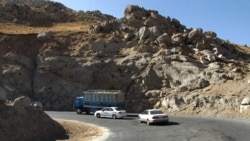The United States believes that because stronger regional ties tend to accelerate economic growth, Central Asia’s future lies in creating regional markets. If the governments of Central Asia work together to ease the movement of goods and services from one end of Central Asia to another, the cost of doing business will decrease and the variety of products available to their people will increase.
Central Asia has enormous potential for economic expansion and prosperity. But, in the words of Richard Hoagland, Principal Deputy Assistant Secretary for South and Central Asian Affairs, “Central Asia remains one of the least economically integrated regions in the world.”
Returning Central Asia to its historic role as the crossroads of global commerce is one of the United States’ long-term goals in the region. Embodied in the New Silk Road Initiative, the focus of the United States is on four issues: first eliminating regional power shortages by connecting energy-rich regions with those that are energy-resource poor. Second, improving trade through expanded transport links and and implementation of trade agreements. Third, streamlining customs and border crossings, thus getting goods to markets faster and cheaper. And finally, helping people from all over Central Asia and beyond connect, so they can take advantage of these changes to build a more stable, secure and prosperous region.
“As the barriers to commerce come down, the incentives to trade go up,” said Principal Deputy Assistant Secretary Hoagland. “Others see the same potential in the region that we do.” China hopes to build the Silk Road Economic Belt, an overland route that could cut transit times from China to Germany by two thirds. Turkey, Azerbaijan, and Turkmenistan are planning the Lapis Lazuli Corridor, another overland route between Afghanistan and Europe which crosses Central Asia, the Caucasus and Turkey. Finally Latvia, which holds the EU presidency, has made ties between the EU and Central Asia a top priority
These are exciting times, with great potential for change in Central Asia, said Principal Deputy Assistant Secretary Hoagland.“But positive change will require political will at the top in each country. Without political will for cooperation, there will be little progress,” he said.
“The United States will remain committed to opening the doors to greater economic opportunity and democratic progress in the region.”

















